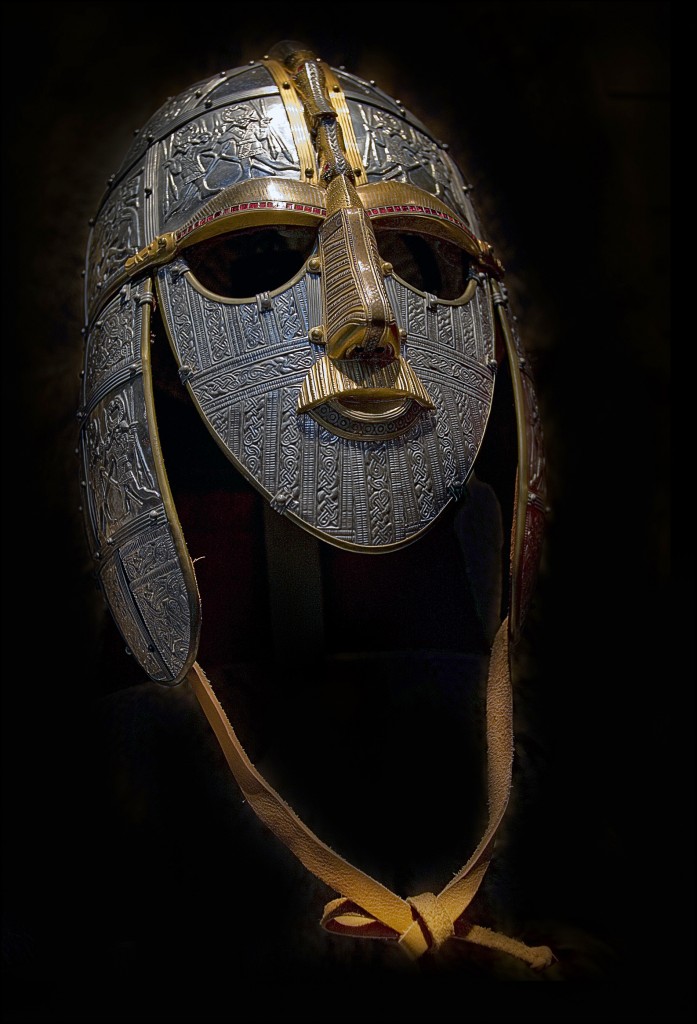 An Anglo-Saxon Connection
An Anglo-Saxon Connection
The Anglo-Saxon epic has been acknowledged many times as one of the major sources of inspiration for J.R.R. Tolkien’s The Lord of the Rings. The world in the poem is easily comparable to Rohan and beyond. The character of Beowulf himself has been placed under scrutiny and analyzed alongside other characters from Middle-earth, including Aragorn and Bard the Bowman.
The Geat hero, however, shares a close affinity with the majority of the kings of Rohan. Indeed, one could argue that many of the qualities and characteristics found in the House of Eorl can be attributed to Beowulf as an individual. The events that shape his life can be recognized in the lives of Théoden’s ancestors.
For the purpose of this article, I will be using Tolkien’s recently published: Beowulf: A Translation and Commentary, in order to reference specific passages in relation to the character. I have also compared them with the text in The Lord of the Rings; with strong emphasis on ‘The House of Eorl’; Appendix A.
***
Eorl and Théoden: Oath Holders
What distinguishes both Eorl and Théoden from the other rulers of the Mark are their deeds during war and their determination to help their allies in Gondor. Eorl mustered an army of followers to fend off a potential attack at the field of Celebrant, thus strengthening the bond between the two realms. Over five hundred years later, history repeated itself during the War of the Ring.
At the Battle of the Pelennor Fields, Théoden rode to the aid of Minas Tirith and his heroic deeds helped the Free Peoples to win over the forces of Mordor. At the same time, the alliance between Rohan and Gondor was renewed under the Oath of Cirion and Eorl. After Beowulf’s deeds against Grendel and his mother, the two kings – Hrothgar and Hygelac – reinforced the bond between their people.
 Helm Hammerhand: Brutal Strength
Helm Hammerhand: Brutal Strength
One of the most distinguishing features of Beowulf that defines him as the archetypal epic hero is his powerful strength. Indeed, his reputation in this respect is most evident when the hero proclaims to his men that he will not fight Grendel with any weapon other than his own hands:
Nay, we two shall this night reject the blade, […] and then let the foreseeing God, the Holy Lord, adjudge the glory to whichever side him seemeth meet.
(lines 557-561)
Considering this praise-worthy statement, perhaps a character one can easily associate Beowulf with is Helm Hammerhand. The ninth king of Rohan was said to be “a grim man of great strength.” Indeed, in the Third Age, as the Long Winter gripped the Riddermark for five months, Helm and his people were besieged by the Dunlendings in Helm’s Deep. Then, it is said:
Helm grew fierce […] and the dread of him alone was worth many men […] he would go out by himself […] into the camps of his enemies, and slay many men with his hands. It was believed that if he bore no weapon no weapon would bite on him.
The Lord of the Rings, Appendix A: ‘The House of Eorl’
The connection between the Geatish hero and the Rohan king is spot on. Both characters held themselves strong enough to fight without need of any weapons, trusting in their own strength to deliver death to their enemies.
Éomer: Sister-son
During the events of the War of the Ring, during which Théodred (son of Théoden) was killed in the first battle of the Fords of Isen, and Théoden himself was mortally wounded, he “named Éomer his heir and called him king” (The Lord of the Rings, Appendix A: ‘The House of Eorl’). Éomer was the son of Théoden’s sister, Théodwyn – and after she and his father (Éomund) died, it was left to the King to bring up his nephew as a son.
Along the same lines, in Beowulf, the titular character serves his uncle Hygelac – king of the Geats. The king had a sister (Beowulf’s mother) and also a son named Heardred.
This after came to pass in later days in the clash of wars, when Hygelac was fallen, and swords of battle had been Heardred’s bane […]
(lines 1852-1854)
The direct line of kings was broken and the people of Geatland turned to the one individual who had a royal connection. Indeed, just like Éomer, it was King Hygelac’s sister-son who eventually became king.
Aldor the Old
Then into Beowulf’s hands came that broad realm. Well he ruled it for fifty winters – now was he a king of many years, aged guardian of his rightful land […]
(lines 1857-1860)
The long life and rule of Beowulf, is also comparable to two of Rohan’s kings: Aldor and Éomer; the former being the longest serving king of the Mark, boasting 75 years on the throne. On the other hand, after Théoden’s death, Éomer ruled for 65 more years: the second longest time as ruler of Rohan.
Beowulf does not compare to either of the two and at the same time, we cannot be sure as to how old he was when he died. However, the fifty years he spent as a king testify his strong character and sound leadership, a trait that seems to have been handed down through some of the descendants of the House of Eorl.

A replica of the Sutton Hoo helmet produced for the British Museum by the Royal Armouries. Photo credit: Gernot Keller
The Benevolent Kings
In the poem of Beowulf, the protagonist may not come across as a highly sympathetic and likeable individual. Beowulf bears the boastfulness and grimness of the typical Norse hero who is up to any challenge and does not fear death so easily.
Yet, once he becomes king, we are told of his benevolence and his prosperous rule over the people of Geatland. Tolkien’s translation of the Anglo-Saxon poem ends with the epilogue:
[…] he was ever of the kings of earth of men most generous and to men most gracious, to his people most tender and for praise most eager […]
(lines 2667-2669)
It is a statement that could also be said to be true about many rulers of the House of Eorl; not least, Aldor the Old. Of his kingship it is said that:
In his time the Rohirrim increased […] Of the next three kings little is said, for Rohan had peace and prospered in their time.
The Lord of the Rings, Appendix A: ‘The House of Eorl’
These were Fréa, Fréawine and Goldwine. We are also told that later on, the new king Brytta (called Léofa by the people), “was loved by all, he was open handed and a help to all the needy”(The Lord of the Rings, Appendix A: ‘The House of Eorl’). Naturally, not every king shared these good qualities. Théoden’s grandfather, Fengel, was one such individual. Yet, his son Thengel “proved a good and wise king” (The Lord of the Rings, Appendix A: ‘The House of Eorl’).
Furthermore, as we read in The Lord of the Rings, both Théoden and Éomer shared their ancestors’ characteristics of good and honest leadership, which assisted their victory in the War of the Ring.
Fram: The Dragon Slayer
Beowulf’s journey is marked by three major milestones : the battle against Grendel, his confrontation with Grendel’s mother and the slaying of a fire-breathing dragon that threatens to destroy the lands and people under his kingship.
Even thus had that despoiler of men for three hundred winters kept beneath the earth that house of treasure […]
(lines 1919-1920)
In the history of the House of Eorl, there is one recorded instance were Fram – before Eorl’s kingship was established – performed one of the greatest deeds for his people:
Frumgar, they say, was the name of the chieftain who led his people to Éothéod. Of his son, Fram, they tell that he slew Scatha, the great dragon of Ered Mithrim, and the land had peace from the long-worms afterwards. Thus Fram won great wealth […]
The Lord of the Rings, Appendix A: ‘The House of Eorl’
Beowulf performs a similar act, and Geatland is rid of the dragon. Yet, unlike Fram, Beowulf is also killed and thus the epic poem draws towards the end.
“Westu hál. Ferðu, Théoden, ferðu”
Finally, one cannot end a discussion on Beowulf and Tolkien without mentioning the two beautiful and melancholic moments in both works whereby these kings are given a tradition farewell.
Whilst Beowulf is burnt on a pyre, his remains are buried within a barrow along with some of the treasures reclaimed from the dragon hoard. The traditions and customs that follow resemble the same practices of the Rohirrim.
The Geatish hero is saluted in the following manner:
Then about the tomb rode warriors valiant, songs of princes, twelve men in all, who would their woe bewail, their King lament, a dirge upraising, that man praising, honouring his prowess and his mighty deeds […]
(lines 2659-2662)
Meanwhile, Theoden’s funeral follows a similar custom, in that:
“the Riders of the King’s House upon white horses rode round about the barrow and sang together of Théoden Thengel’s son”
(The Return of the King, Book 6, Chapter VI)
It is this very last moment for these two characters which strongly conveys the Anglo-Saxon spirit within the culture of Rohan. Tolkien presents his readers with a fascinating insight into a lost history and weaves it within his own fantasy world.
Final Remarks
As a character, Beowulf can be seen as the exemplary and perfect ruler from which the renowned kings of Rohan derive. In fact, reading about the land and history of the Rohirrim, one discovers how the character of Beowulf could well have been one of its kings. Ultimately, it is not just about the individual, but his actions and motives, and the people and cultures around him, seem to transform Beowulf into yet another Middle-earth hero.



3 Comments